One of the key learnings from the Farm Profit Programme was to manage body condition score in livestock to improve performance.
This helped contribute to an increase of rearing percentage from 82% to 91% for calves.
Condition scoring is a quick and simple technique to assess how much fat cover a cow or sheep has through determining the fat cover on the short ribs.
Assessing cows at key points in the year allows you to make better management decisions on nutrition, which will lead to fewer calving problems and better fertility.
Spring-calving cows in October at a condition score of 3.5 or more is a good position for the farmer, but if she is still in that condition at the point of calving, it is not very clever.
The layer of internal fat will lead to calving difficulties and then poorer fertility is likely to follow.
The first aim for condition scoring is to aim for calving with spring-calvers at a condition of 2.5 and autumn-calvers no more than condition 3.
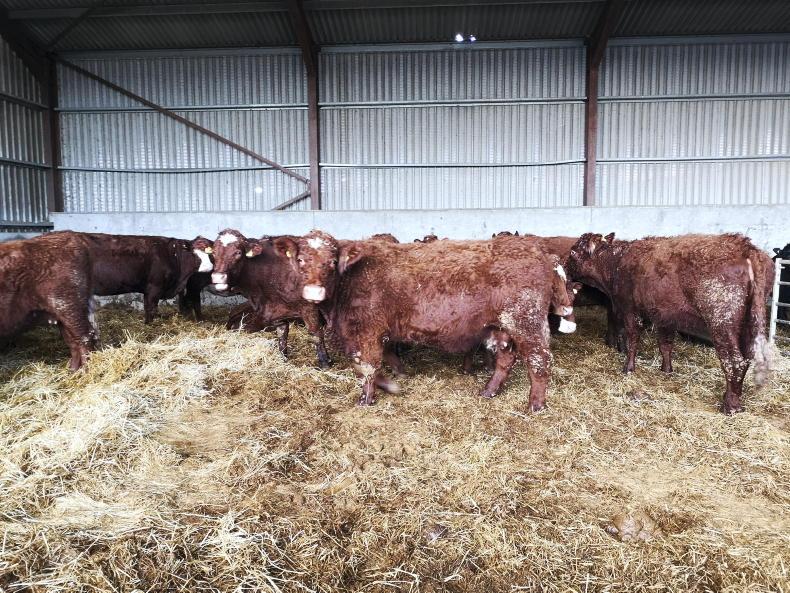
Fatter cows at the Duguid's on a straw diet.
Earlier
But to get them to this score you need to start off earlier in the cycle, with weaning time usually the best point to start managing condition.
This allows enough time before calving and allows diet decisions not to affect milk for the calf.
Ideally, cows would be kept in three groups, as was implemented successfully at Arthur Duguid’s farm at Cranna in Aberdeenshire.
Arthur’s herd of cattle was broken into three groups of fat cows, optimum cows and thin cows. If you don’t have enough space for three groups, then thinner cows can be grouped with heifers for the first part of winter to help increase their condition score.
Remember to assess why these cows are thinner than the rest of the herd. This could be due to an underlying health issue such as fluke or worms, the breed type or age – either older or a first-calved heifer perhaps.
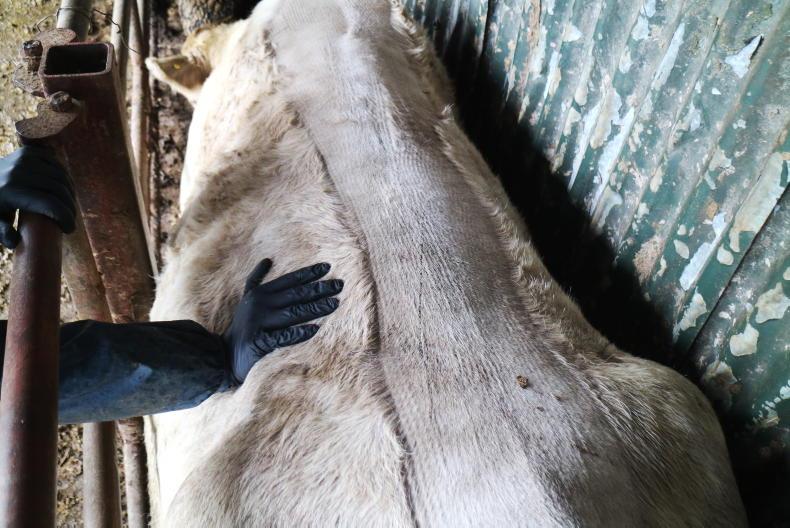
Body Condition Scoring cows at weaning allows time to get them to the right weight for calving.
Once calved, these cows should be fed a level above a maintenance diet to bring their condition up. On Arthur Duguid’s farm, these cows were on a diet of good-quality silage, straw and some concentrates.
Energy
To gain one condition score over winter, an average cow will need to eat an extra 2,250 megajoules (MJ) of energy, which is the equivalent of 850kg of average silage.
Cows in optimal condition need to be fed a maintenance diet, which can be a silage and straw mix with no additional concentrates.
On Arthur Duguid’s farm, these cows were kept outside on the forage rape to maintain their condition at a lower cost than housed cattle.
Finally, fat cows with a score above 3 need to lose around 70kg of body weight before calving.
As a cow releases her fat reserves, it contributes to the daily energy requirements.
Over a winter, this can see 2,000MJ of energy released to the cows, which is the equivalent of 750kg of average silage.
On Arthur Duguid’s farm, he fed his fat cows on straight barley straw with ammonia syrup.
Programme success
Over the course of the programme, rearing rate has risen from 82% in the first year to 91% in the last year.
Out of 750 cows across the six farms, a total of 679 were reared in 2020, which is up from 652 cows rearing 535 in 2016.
This has played a big part in increasing the gross margin per hectare for the cattle enterprises on the six farms from £287/ha to £471/ha.
One of the key learnings from the Farm Profit Programme was to manage body condition score in livestock to improve performance.
This helped contribute to an increase of rearing percentage from 82% to 91% for calves.
Condition scoring is a quick and simple technique to assess how much fat cover a cow or sheep has through determining the fat cover on the short ribs.
Assessing cows at key points in the year allows you to make better management decisions on nutrition, which will lead to fewer calving problems and better fertility.
Spring-calving cows in October at a condition score of 3.5 or more is a good position for the farmer, but if she is still in that condition at the point of calving, it is not very clever.
The layer of internal fat will lead to calving difficulties and then poorer fertility is likely to follow.
The first aim for condition scoring is to aim for calving with spring-calvers at a condition of 2.5 and autumn-calvers no more than condition 3.

Fatter cows at the Duguid's on a straw diet.
Earlier
But to get them to this score you need to start off earlier in the cycle, with weaning time usually the best point to start managing condition.
This allows enough time before calving and allows diet decisions not to affect milk for the calf.
Ideally, cows would be kept in three groups, as was implemented successfully at Arthur Duguid’s farm at Cranna in Aberdeenshire.
Arthur’s herd of cattle was broken into three groups of fat cows, optimum cows and thin cows. If you don’t have enough space for three groups, then thinner cows can be grouped with heifers for the first part of winter to help increase their condition score.
Remember to assess why these cows are thinner than the rest of the herd. This could be due to an underlying health issue such as fluke or worms, the breed type or age – either older or a first-calved heifer perhaps.

Body Condition Scoring cows at weaning allows time to get them to the right weight for calving.
Once calved, these cows should be fed a level above a maintenance diet to bring their condition up. On Arthur Duguid’s farm, these cows were on a diet of good-quality silage, straw and some concentrates.
Energy
To gain one condition score over winter, an average cow will need to eat an extra 2,250 megajoules (MJ) of energy, which is the equivalent of 850kg of average silage.
Cows in optimal condition need to be fed a maintenance diet, which can be a silage and straw mix with no additional concentrates.
On Arthur Duguid’s farm, these cows were kept outside on the forage rape to maintain their condition at a lower cost than housed cattle.
Finally, fat cows with a score above 3 need to lose around 70kg of body weight before calving.
As a cow releases her fat reserves, it contributes to the daily energy requirements.
Over a winter, this can see 2,000MJ of energy released to the cows, which is the equivalent of 750kg of average silage.
On Arthur Duguid’s farm, he fed his fat cows on straight barley straw with ammonia syrup.
Programme success
Over the course of the programme, rearing rate has risen from 82% in the first year to 91% in the last year.
Out of 750 cows across the six farms, a total of 679 were reared in 2020, which is up from 652 cows rearing 535 in 2016.
This has played a big part in increasing the gross margin per hectare for the cattle enterprises on the six farms from £287/ha to £471/ha.






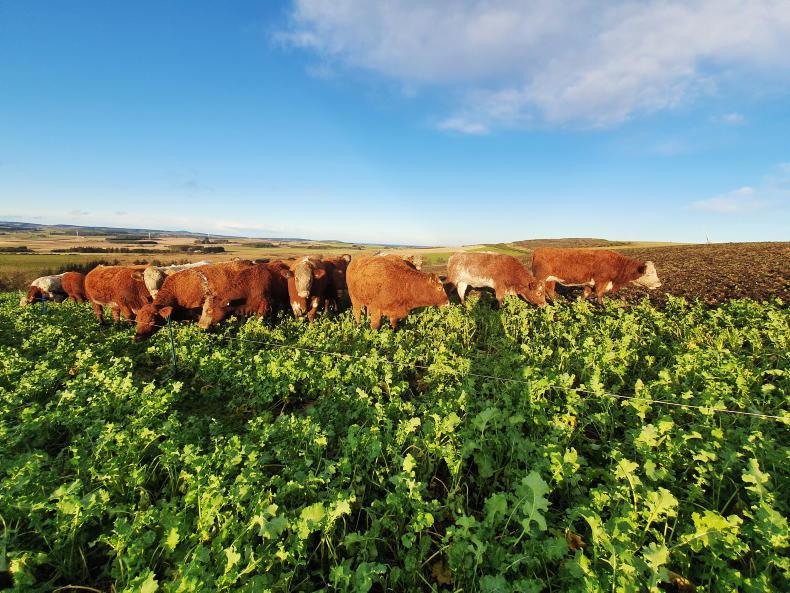

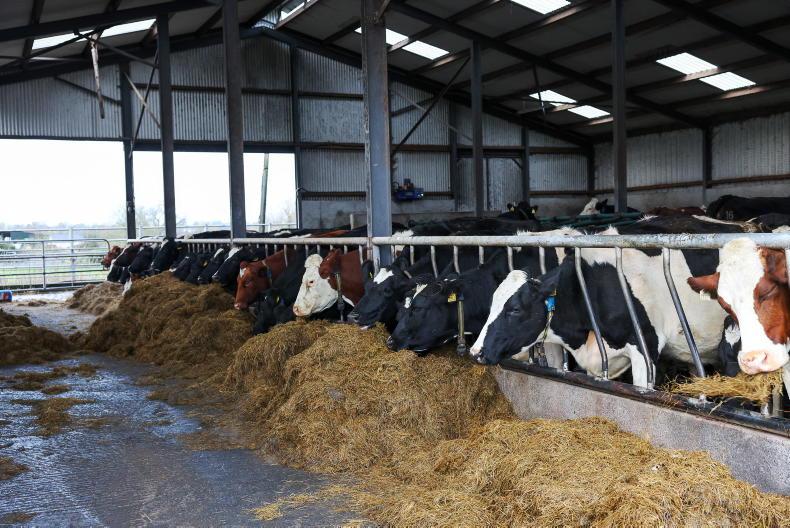
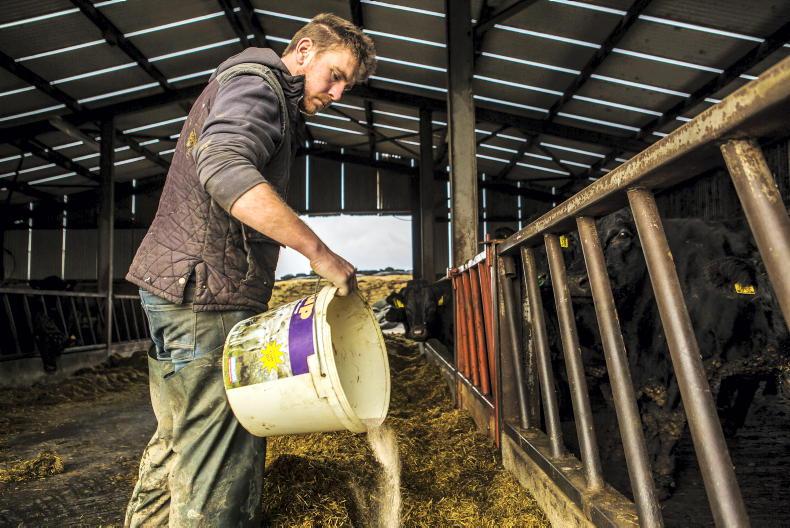
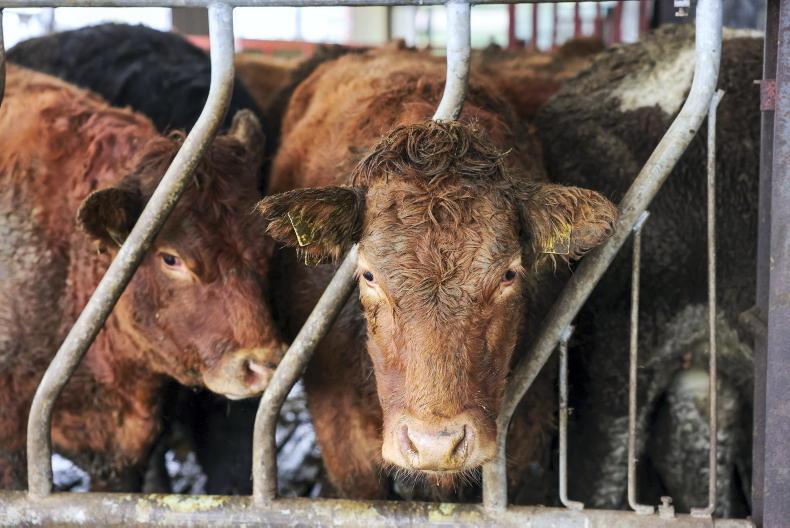
SHARING OPTIONS